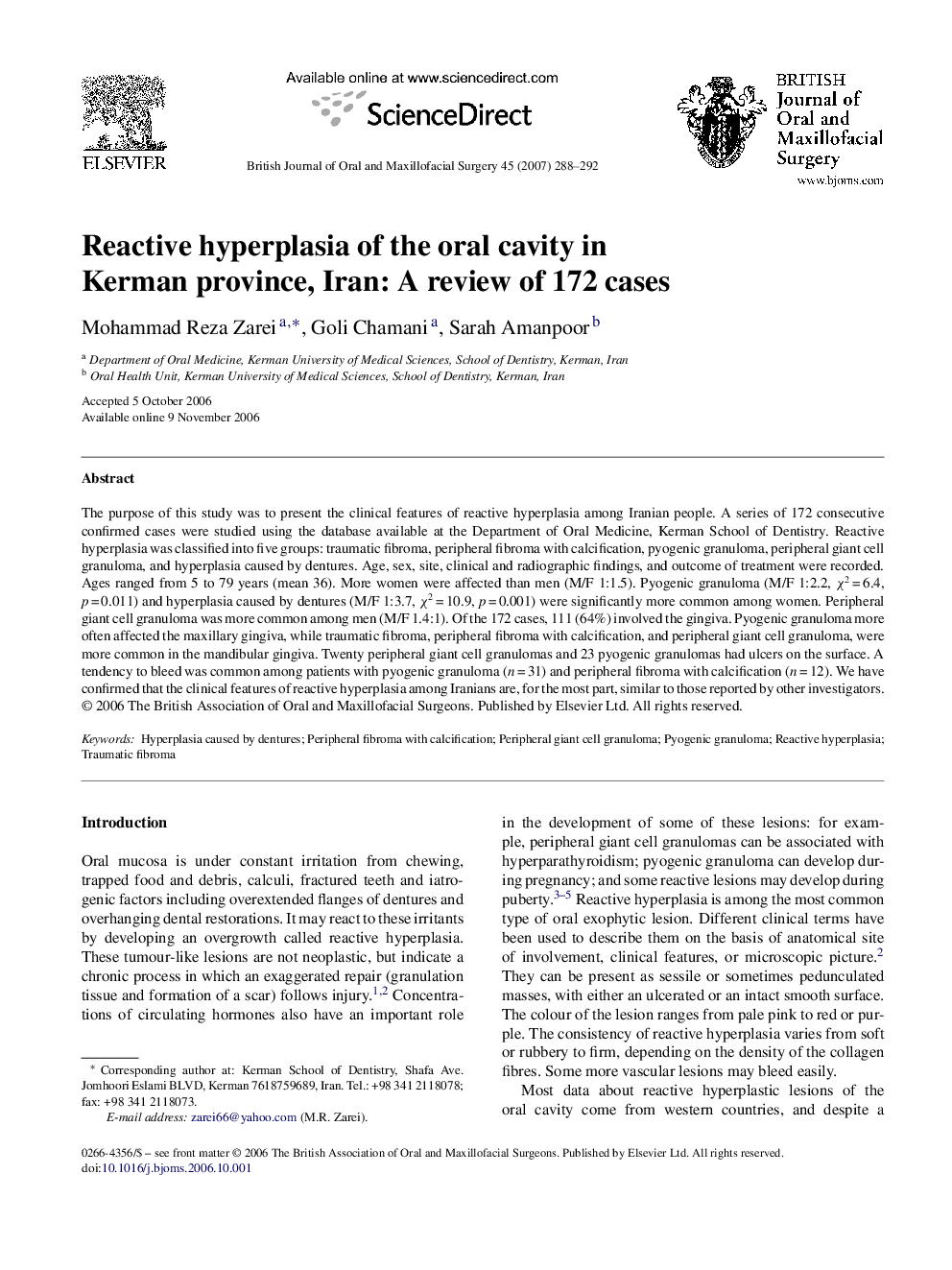| Article ID | Journal | Published Year | Pages | File Type |
|---|---|---|---|---|
| 3126049 | British Journal of Oral and Maxillofacial Surgery | 2007 | 5 Pages |
The purpose of this study was to present the clinical features of reactive hyperplasia among Iranian people. A series of 172 consecutive confirmed cases were studied using the database available at the Department of Oral Medicine, Kerman School of Dentistry. Reactive hyperplasia was classified into five groups: traumatic fibroma, peripheral fibroma with calcification, pyogenic granuloma, peripheral giant cell granuloma, and hyperplasia caused by dentures. Age, sex, site, clinical and radiographic findings, and outcome of treatment were recorded. Ages ranged from 5 to 79 years (mean 36). More women were affected than men (M/F 1:1.5). Pyogenic granuloma (M/F 1:2.2, χ2 = 6.4, p = 0.011) and hyperplasia caused by dentures (M/F 1:3.7, χ2 = 10.9, p = 0.001) were significantly more common among women. Peripheral giant cell granuloma was more common among men (M/F 1.4:1). Of the 172 cases, 111 (64%) involved the gingiva. Pyogenic granuloma more often affected the maxillary gingiva, while traumatic fibroma, peripheral fibroma with calcification, and peripheral giant cell granuloma, were more common in the mandibular gingiva. Twenty peripheral giant cell granulomas and 23 pyogenic granulomas had ulcers on the surface. A tendency to bleed was common among patients with pyogenic granuloma (n = 31) and peripheral fibroma with calcification (n = 12). We have confirmed that the clinical features of reactive hyperplasia among Iranians are, for the most part, similar to those reported by other investigators.
